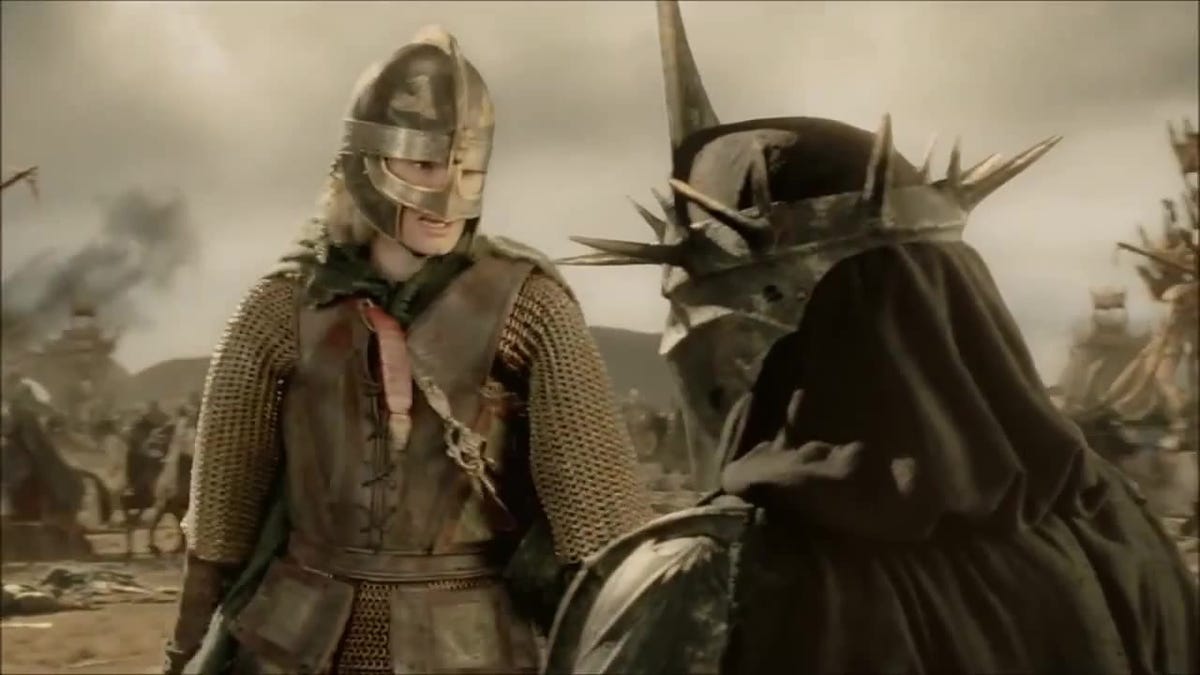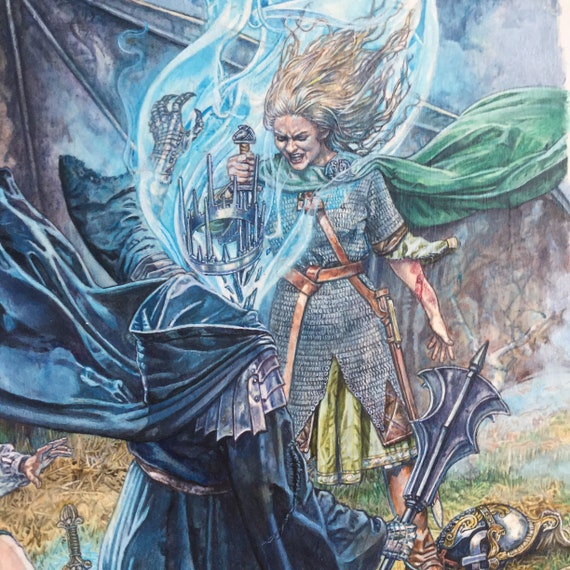

'The war's going well, said Shagrat but Gorbag he wasn't so sure. 'What did I tell you? Something's happening!' cried Sam.

it was a cry of woe., ill tidings for the Dark Tower. As it went it sent out a long shrill cry, the voice of a Nazgûl but. a shape, moving at a great speed out of the West.

Frodo and Sam saw, or rather experienced, the presence of his spirit going back, wailing to his master Sauron in Mordor:Īs Frodo and Sam stood and gazed, the rim of light spread all along the line of the Ephel Dúath, and then. (Meaning Merry the Hobbit, woman, enchanted dagger, combination of these elements is what fulfills the prophecy.) But in fact the Witch-king is not "killed" in the sense of his soul going to underworld/afterlife. If I may add something, all you wrote here is correct. You want to lose yourself in a very well organized and comprehensive Tolkien-Lore repository, google 'Encyclopedia of Arda'. (After all, isn't a Hobbit not a man, either?) Regardless, it's a nice example of the level of intricacy Tolkien regularly employed. I've seen debates where people argue for that reason that Merry's blow was what actually killed the Witch-King, and Éowyn merely gave the coup-de-grace. That is why that blade in particular is anathema to the Witch-King. The long and the short of it is that the weapons that were buried with them were specifically forged (and enchanted, or at least it was intimated) to battle the forces of Angmar and even the Witch-King himself. The warriors who fell in that conflict were buried in the barrows, which were not evil places until the Witch-King sent evil spirits to occupy them. He gathered men and orcs to him and attacked the Northern Dúnedain, who got the Elves to help them. He founded the kingdom of Angmar and named himself 'The Witch-King of Angmar'. Another detail to note: Sauron sent the Lord of the Nazgûl, to fight the Northern Dúnedain, located in Arnor (to the North of Middle Earth).


 0 kommentar(er)
0 kommentar(er)
